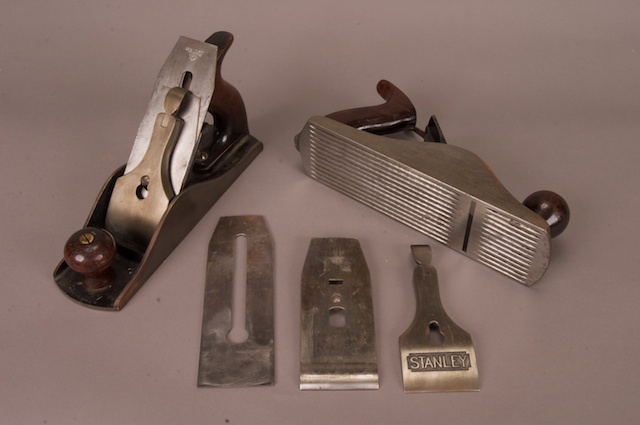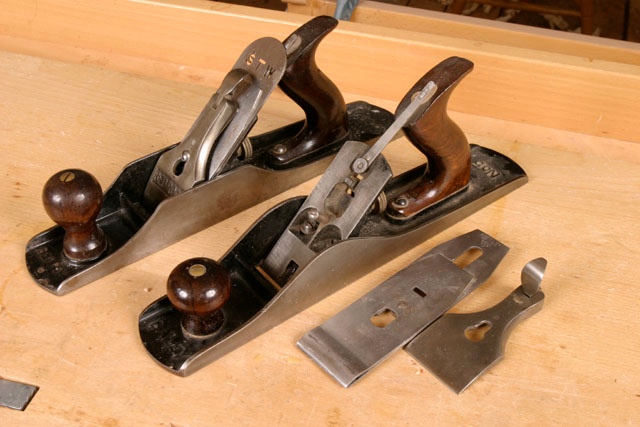In my youth, one reason many builders of fine furniture, amateur and professional alike, turned to hand tools was economy. Hand tools were much cheaper

than machinery. Stanley probably made more hand tools than any other company, having plants in New Britain, Connecticut and England. The most notable hand tool they manufactured was Bailey Planes. The company bought Leonard Bailey out in 1869 and hired him to supervise production. Stanley made prodigious numbers of Bailey planes between 1869 and the early 1960s. The design set a high-water mark for hand planes and Bailey’s numbering system, sizes 01 through 08 (pronounced Oh and the number) became the de facto standard for the entire woodworking industry. Smoothing planes are 01 though 04; jack planes are number 05, with 07 and 08 being jointers. In 1923, an 05 jack plane sold for $6.05.
In 1898, Stanley introduced an even better plane, the Bedrock. This used the same numbering system, but a 6 preceded the number to denote the Bedrock Line. In the very early 20tth century, the cheeks of the 600 Bedrock Line were squared to further distinguish them from the Bailey Line. Stanley ceased production of the Bedrock in 1943, but craftsmen use and treasure them to this day. Today at least three manufacturers make slavish copies of Bedrock planes. In 1923, a 605 Bedrock jack plane sold for $6.75.

When I was getting serious about woodworking in the 1970s, plane manufacture had sunk to an all-time low. You could not buy a usable plane anymore. But Baileys abounded at yard sales and flea markets for between $5 and $25. Bedrocks went for $5 to $75, depending on whether the seller realized that Bedrocks were premium merchandise. This happy state of affairs made a used high quality classic cheaper than a new piece of junk. There are those who will only buy new, and they chafed under what was available.
As woodworking grew as a hobby, the demand for decent hand planes became sufficient that companies started making decent ones again. Tom Lie-Nielsen was the first to realize this need and started making a good Bedrock reproduction. Today we are blessed with a host of companies making really good planes; however, they are not cheap!
If we factor in inflation for our 1923 prices from Stanley Catalogue Number 120, we find our $6.05 Bailey would cost $80.49 today and the $6.75 Bedrock would cost $89.80. This tells us that planes, and I think hand tools in general, have gotten significantly more expensive. A 05 Lie-Nielsen Jack today costs $325, which is 3.6 times the price of our 1923 Bedrock.
Some of this price difference can be attributed to manufacturing quantities. As you make more of any product, quantities of scale are reached that significantly reduce manufacturing cost. In the 1920s, Stanley was making planes in the hundreds of thousands, while any manufacturer today is making thousands at best. This would account for part of the price increase. Another factor is that planes, and many other hand tools, are cast iron. The cost for a foundry to meet EPA environmental standards, which are needed if the world is to go on, is significant. Some of the more attractive prices for hand planes may be due to manufacture in Asia, where manufacturing air quality standards are lower than in the U.S.
The good news, I think, is that cost of machinery has seen similar price increases, so hand tools are still a good alternative. What is more: they are safer, quiet and don’t need a power cord. Used planes do not abound anymore, but are still quite available. A decent Bailey can still be purchased for less than $100, making it a very good buy indeed.





